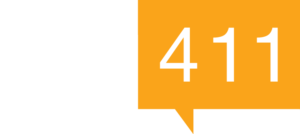Compliance has always been a highly discussed topic among HR leaders, but after the pandemic forced the world to work from home a new compliance topic has come into the spotlight — accessible remote workspaces.
Did you know that as of March 2025, 22.8% of US employees worked remotely at least partially? That is roughly 1 in 4 employed people in America working remotely at least some hours.
It’s evident that remote workspaces aren’t going anywhere, so HR professionals must ensure remote roles are accessible to all employees to foster inclusion, compliance, and productivity.
In this HR 411 article, we will cover:
- What compliance laws say about remote work
- How to improve existing remote compliance structures
ADA and Remote Work
Compliance with the American Disabilities Act (ADA) is required for all organizations and businesses operating in the United States. This civil rights law prohibits discrimination against individuals with disabilities and applies to all areas of public life, including remote work.
The ADA lists remote and hybrid work as acceptable accommodations for work that is not required to be performed in person. While the ADA does not require companies to automatically have these options as alternatives, it does require these options to be fully accessible when in use as part of Section 508. Section 508 specifically ensures that all electronic technology that is developed, maintained, or used is accessible to people with disabilities.
Keeping in mind that these roles must provide accurate accessibility if requested, it is important to have at least a plan in place for accessible remote roles.
Curious about digital accessibility laws in other countries and how they apply to you? Check out this article to learn more.
Ensuring Digital Accessibility
Having digital accessibility is vital to any organization to keep company platforms and technology current and inclusive. Accessible systems benefit everyone — not just individuals with disabilities — by improving usability, productivity, and innovation.
Here are four tips to improve your compliance framework and create more accessible spaces for any remote role:
Create an Accessibility Team and Plan
Creating a team that can focus on compliance and accessibility is the first thing any employer should do. This team can create a compliance plan and manage accessibility requests and maintenance. This means that HR managers should:
- Establish clear roles and responsibilities of team members.
- Invest in accessibility training and necessary resources.
- Seek expertise from consultants who can help guide the team.
- Focus on collaboration with other teams to establish cross-accessibility across the business.
Emphasize Open Communication
Open communication is vital to remote accessibility. Having open dialog about accessibility can create a more positive environment in the workplace. Regular assessments or employee surveys can provide necessary feedback on current accessible methods and encourage employees to speak up about issues they have. These could include questions about satisfaction with tools and workspaces or how HR can improve.
Have Multiple Options Prepared
It is never a good idea to put all your eggs in one basket. The same goes for accommodation options. Every employee will need something different, so it is important to be as prepared as possible with different options to ensure productivity and compliance. Having access to common arrangements is key for quick turnarounds and little productivity fluctuations. Some common options include assistive technology like screen readers or note taking apps, and project management software.
Just because something is less likely to be requested doesn’t mean it isn’t an option, so having that option stashed away can help speed up the request process when the time comes. Some examples of uncommon — but still useful — adjustments include noise canceling headphones and ergonomic equipment like standing desks or chairs.

Start Small for Broader Impact
Starting small and working your way to larger arrangements as needed can increase overall compliance rates. Some smaller adjustments that can be easily implemented include:
- Providing automatic captioning and transcripts for audio and visual content.
- Taking notes and distributing them to all team members after a meeting
- Making sure text size and color contrast of font can be adjusted on webpages and company resources.
- Give meaningful and accurate alt text for images and GIFs.
When it comes to accessibility, even the smallest accommodation can have a significant impact. It’s important to make sure you don’t hold back your employees with limited accommodations.






